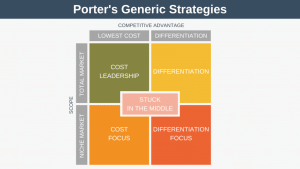A core competency is defined as something unique that an organization has, or as something unique it can do. A company that develops a unique core competency can create long lasting competitive advantage.
A core competency will typically meet all rules on the following checklist:
- it provides benefit to the customer
- it is difficult to imitate
- it can be leveraged widely to create many products (or operate in many markets)
- it will uniquely identify the organization
- it will be difficult to pin down, because it seems to be a combination of things such as technology, process, and know-how.
Now that we know what core competencies are, and we’re armed with a checklist to check for one, let’s look at some core competency examples…
Core Competency Example 1: Apple
The core competency of Apple can be said to be “making user friendly user interfaces and design”. Let’s examine this statement against our checklist:
| Criteria | Yes/No |
| Customer benefit? | Yes. The customer clearly benefits from great user interfaces |
| Difficult to imitate? | Yes. Companies have been trying for years and not yet succeeded. |
| Can be leveraged? | Yes. This core competency has been rolled out to the iPod, the iPhone, and most recently, the iPad. |
| Uniquely identifies the organization? | Yes |
| Difficult to pin down? | Yes – it’s not just design, but marketing, software, hardware etc |
Core Competency Example 2: Walmart
The core competency of Walmart can be said to be “Groceries at a low cost”. Let’s examine this statement against our checklist:
| Criteria | Yes/No |
| Customer benefit? | Yes. The customer gets their goods cheaper than anywhere else |
| Difficult to imitate? | Yes. A company would require huge scale to replicate, and that is obviously not an easy thing to achieve. |
| Can be leveraged? | Yes. Walmart sells all kinds of goods using the same model |
| Uniquely identifies the organization? | Yes, I think in the US at least, most consumers would identify Walmart as being amongst the cheapest in this space. |
| Difficult to pin down? | Yes – it’s scale, but also supply chain management, and high inventory turnover etc. |
Core Competency Example 1: Dell
The core competency of Dell can be said to be “custom made PC direct from manufacturer at a low cost”. Let’s examine this statement against our checklist:
| Criteria | Yes/No |
| Customer benefit? | Yes. The customer gets a PC at a inexpensive price point. |
| Difficult to imitate? | Marginal – and this could be Dell’s downfall |
| Can be leveraged? | Yes. They have rolled the model out to laptops, printers etc |
| Uniquely identifies the organization? | Yes. Dell would certainly be identified by consumers as one of the most affordable in this space. |
| Difficult to pin down? | Yes (but probably the easiest to identify of all 3 examples) – it’s a combination of just in time manufacturing,low cost sales channels (Internet), outsourced R&D etc. |
Summary
A core competency is defined as something unique that an organization has, or as something unique it can do. A company that develops a unique core competency can create a long lasting competitive advantage. If you are working in a project or program management environment then you should understand how what you’re working on leverages or adds to your organization’s core competencies. This will enable you to understand how the project outputs will compete in the market and also how the deliverables align with your organization’s strategy.










